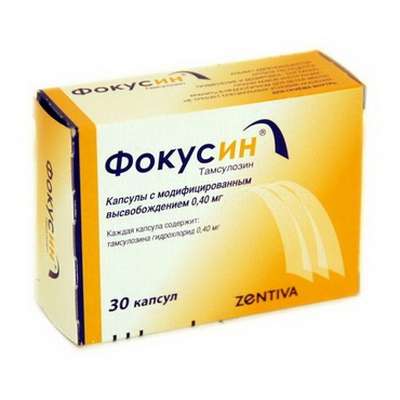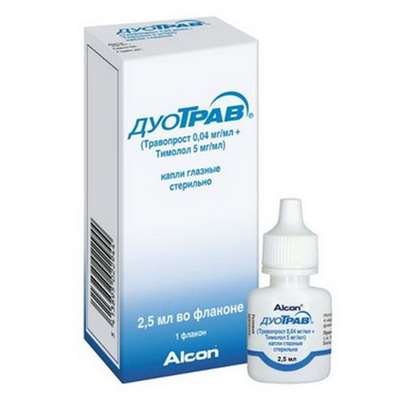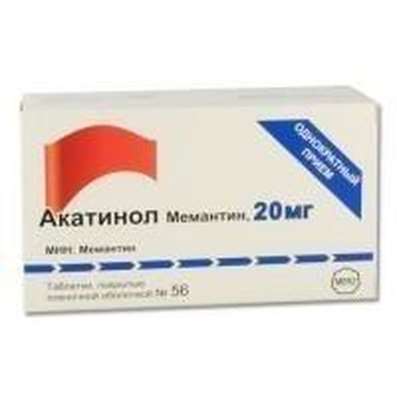Instruction for use: Bagothyrox
I want this, give me price
Active substance Levothyroxine sodium
ATX Code H03AA01 Calcitonin
Pharmacological groups
Synthetic thyroid hormone [Thyroid and parathyroid hormones, their analogs and antagonists (including antithyroid agents) / 67 /]
Nosological classification (ICD-10)
C73 Malignant neoplasm of thyroid
Thyroid cancer, Thyrotropin-Dependent Thyroid Carcinoma, Anaplastic thyroid cancer, Thyroid carcinoma, Medullary thyroid cancer, Thyroid tumors, Papillary thyroid cancer
E03.9 Unspecified hypothyroidism
Hypothyroidism, Hypothyroid conditions, Thyroid hypothyroidism, Diagnosis of hypothyroidism, Simple goiter, Hypothyroid edema,Wolf-Chaikoff effect, Congenital hypothyroidism, Secondary hypothyroidism, Hypothyroid obesity, Hypothyroid status, Obstructive hypothyroidism
E04.0 Non-toxic diffuse goiter
Diffuse nontoxic goiter, Diffuse euthyroid goiter
E04.9 Non-toxic goiter, unspecified
The sporadic goiter, Non-toxic goiter
E05.0 Thyrotoxicosis with diffuse goiter
Goiter toxic diffuse, Toxic goiter, Diffuse thyrotoxic goiter, Graves disease, Diffuse toxic goiter, Goiter diffuse toxic, Parry's disease, Flanyani disease, Von Bazedova's disease, Toxic diffuse goiter
E05.9 Thyrotoxicosis, unspecified
tireotoksicski reaction, Enlargement of the thyroid gland with symptoms of hyperthyroidism, The phenomenon of iodine Basedow, Thyroid hyperplasia, hyperthyroid state, Hyperthyroidism, Thyroid dysfunction, Diffuse thyrotoxic goiter, The latent thyrotoxicosis, Increased thyroid function, thyrotoxicosis
E07.8.0 * Euthyroid syndrome
Goiter after thyroid resection, Recurrence of goiter after resection of the thyroid gland, Euthyroid goiter, Euthyroid hyperplasia of the thyroid gland
E91 * Diagnosis of endocrine system diseases
Diagnosis of hypogalactia, Diagnosis of thyroid suppression, Diagnostic test of thyroid function, Diagnosis of hypothyroidism, Diagnosis of disorders of gonadotropic pituitary gland function, Thyroid scintigraphy test, Diagnostics of pheochromocytoma
Composition
Tablets 1 table.
active substance:
Levothyroxine sodium 50 μg\100 μg\150 μg
Auxiliary substances: MCC; Cellulose powder; Lactose monohydrate; Magnesium stearate; Sodium croscarmellose; Dye quinoline yellow (Table 50 μg); Dye brilliant blue (Table 150 μg)
Description of dosage form
Tablets 50 mcg: rectangular tablets of yellow color, with three notches on each side. On each of the 4 equal parts of the tablet, the depression "T4" on both sides.
Tablets 100 mcg: rectangular tablets of white color, with three notches on each side. On each of the 4 equal parts of the tablet, the depression "T4" on both sides.
Tablets of 150 mcg: rectangular tablets of blue color, with three notches on each side. On each of the 4 equal parts of the tablet, the depression "T4" on both sides.
pharmachologic effect
Pharmacological action - thyroid.
Pharmacodynamics
Synthetic levorotatory isomer of thyroxine. After a partial conversion into triiodothyronine (in the liver and kidneys) and the transition into the cells of the body, it affects the development and growth of tissues, the metabolism. In small doses, it has an anabolic effect on protein and fat metabolism. In medium doses stimulates growth and development, raises the need for tissues in oxygen, stimulates the metabolism of proteins, fats and carbohydrates, increases the functional activity of the cardiovascular system and the central nervous system. In large doses oppresses the production of thyrotropin-releasing hormone of the hypothalamus and TTG of the pituitary gland. Therapeutic effect is observed after 7-12 days, during the same time the action remains after drug discontinuation. The clinical effect with hypothyroidism is manifested in 3-5 days. Diffuse goiter decreases or disappears within 3-6 months.
Pharmacokinetics
When ingested, levothyroxine sodium absorbed up to 80% of the accepted dose of the drug almost exclusively in the upper part of the small intestine. Eating lowers the absorption of sodium levothyroxine. Cmax in the blood serum is reached approximately 5-6 hours after ingestion. After absorption, more than 99% of the drug binds to serum proteins (thyroxine-binding globulin, thyroxine-binding prealbumin and albumin). In various tissues, approximately 80% of levothyroxine sodium monodegradation occurs with the formation of triiodothyronine (T3) and inactive products. Thyroid hormones are metabolized mainly in the liver, kidneys, brain and muscles. A small amount of the drug is subjected to deamination and decarboxylation, as well as conjugation with sulfuric and glucuronic acids (in the liver). Metabolites are excreted in urine and bile. T1 / 2 of the drug - 6-7 days. With thyrotoxicosis, T1 / 2 is shortened to 3-4 days, and when hypothyroidism is prolonged to 9-10 days.
Indication
Hypothyroidism;
Euthyroid goiter;
As a replacement therapy and for the prevention of recurrent goiter after resection of the thyroid gland;
Thyroid cancer (after surgical treatment);
Diffuse toxic goiter: after reaching the euthyroid status with thyreostatics (in the form of combined or monotherapy);
As a diagnostic tool in the test of thyroid suppression.
Contraindications
Increased individual sensitivity to the drug;
Untreated thyrotoxicosis;
Acute myocardial infarction, acute myocarditis;
Untreated insufficiency of the adrenal cortex.
With caution: IHD (atherosclerosis, angina pectoris, myocardial infarction in anamnesis); arterial hypertension; arrhythmia; diabetes; Severe long-term hypothyroidism; Malabsorption syndrome (dose adjustment may be required).
pregnancy and lactation
During pregnancy and breastfeeding, therapy with levothyroxine sodium, prescribed for hypothyroidism, should continue. During pregnancy, an increase in the dose of the drug is required due to an increase in the level of thyroxin-binding globulin. The amount of thyroid hormone secreted with breast milk (even when treating with high doses of the drug) is not enough to cause any disturbances in the child during breastfeeding. Application in pregnancy of the drug in combination with thyreostatics is contraindicated, because Taking levothyroxine sodium may require an increase in thyroid doses. Since thyreostatics, in contrast to levothyroxine sodium, can penetrate the placenta, the fetus may develop hypothyroidism. During breastfeeding, the drug should be taken with caution, strictly at recommended doses under the supervision of a doctor.
Side effects
With proper application under the supervision of a doctor, side effects are not observed. With increased sensitivity to the drug, allergic reactions can be observed.
Interaction
Levotiroksin sodium increases the effect of indirect anticoagulants, which may require a reduction in their dose.
The use of tricyclic antidepressants with levothyroxine sodium can lead to an increase in the effect of antidepressants.
Thyroid hormones can increase the need for insulin and oral hypoglycemic drugs. More frequent monitoring of blood glucose levels is recommended at the beginning of treatment with levothyroxine sodium, as well as changing the dosage regimen.
Levothyroxine sodium reduces the effect of cardiac glycosides. With simultaneous application of colestyramine, colestipol and aluminum hydroxide reduce the plasma concentration of levothyroxine sodium by inhibiting its absorption in the intestine.
When used simultaneously with anabolic steroids, asparaginase, tamoxifen, pharmacokinetic interaction at the level of binding to the protein is possible.
With simultaneous use with phenytoin, salicylates, clofibrate, furosemide in high doses, the content of non-protein-bound blood plasma levothyroxine sodium and thyroxine (T4) increases.
The use of estrogen-containing drugs increases the content of thyroxine-binding globulin, which may increase the need for levothyroxine sodium in some patients. Somatotropin, when used concomitantly with levothyroxine sodium, can accelerate the closure of epiphyseal growth zones.
The intake of phenobarbital, carbamazepine and rifampicin can increase the clearance of levothyroxine sodium and require an increase in the dose.
Dosing and Administration
Dosing and Administration Inside, in the morning on an empty stomach, at least 30 minutes before a meal, washing down the pill with a small amount of liquid (half a cup of water) and not chewing.
The daily dose is determined individually depending on the indications
When carrying out substitution therapy for hypothyroidism in patients younger than 55 years old, in the absence of cardiovascular diseases, Bagotiroks is prescribed in a daily dose of 1.6-1.8 μg / kg; In patients over 55 years of age or with cardiovascular diseases - 0,9 mkg / kg. With significant obesity, the calculation should be made on "ideal" weight.
Breast children a daily dose of Bagotirox given in 1 dose 30 minutes before the first feeding. The tablet is dissolved in water to a fine suspension, which is prepared immediately before taking the drug. In patients with severe, long-term hypothyroidism, treatment begins with extreme caution, from small doses (12.5 μg / day), increased to maintenance at longer intervals (by 12.5 μg / day every 2 weeks) and more often determine the level TTG in the blood. With hypothyroidism, Bagotirox is taken, as a rule, throughout life. In thyrotoxicosis, Bagotirox is used in complex therapy with thyreostatics after reaching the euthyroid state. In all cases, the duration of treatment with the drug is determined by the doctor.
Overdose
Symptoms that are typical for thyrotoxicosis: palpitations, heart rhythm disturbances, heart pain, anxiety, tremors, sleep disorders, increased sweating, increased appetite, weight loss, diarrhea.
Treatment: Depending on the severity of symptoms, a doctor may recommend a reduction in the daily dose of the drug, a break in treatment for several days, the appointment of beta-blockers. After the disappearance of side effects, treatment should be started with caution from a lower dose.
special instructions
When hypothyroidism, caused by damage to the pituitary, it is necessary to find out whether there is a concomitant failure of the adrenal cortex. In this case, the replacement therapy of GCS should be started before the beginning of treatment of hypothyroidism with thyroid hormones in order to avoid the development of acute adrenal insufficiency. The drug does not affect the professional activities associated with driving vehicles and controlling mechanisms.
Form of issue
Tablets, 50 μg, 100 μg and 150 μg. For 10 tab. In a blister of PVC / aluminum. For 5 or 10 blisters in a cardboard box.
Terms of leave from pharmacies
On prescription.
Storage conditions
In a dry, dark place at a temperature of up to 25 ° C.
Keep out of the reach of children.
Shelf life
2 years.
Do not use after the expiry date printed on the package.

 Cart
Cart





